 W
WIn anthropology and geography, a cultural region, cultural sphere, cultural area or culture area refers to a geography with one relatively homogeneous human activity or complex of activities (culture). Such activities are often associated with an ethnolinguistic group and with the territory it inhabits. Specific cultures often do not limit their geographic coverage to the borders of a nation state, or to smaller subdivisions of a state. Cultural "spheres of influence" may also overlap or form concentric structures of macrocultures encompassing smaller local cultures. Different boundaries may also be drawn depending on the particular aspect of interest, such as religion and folklore vs. dress and architecture vs. language.
 W
WChinese writing, culture and institutions were imported as a whole by Vietnam, Korea, Japan and other neighbouring states over an extended period. Chinese Buddhism spread over East Asia between the 2nd and 5th centuries AD, followed by Confucianism as these countries developed strong central governments modelled on Chinese institutions. In Vietnam and Korea, and for a shorter time in Japan and the Ryukyus, scholar-officials were selected using examinations on the Confucian classics modelled on the Chinese civil service examinations. Shared familiarity with the Chinese classics and Confucian values provided a common framework for intellectuals and ruling elites across the region. All of this was based on the use of Literary Chinese, which became the medium of scholarship and government across the region. Although each of these countries developed vernacular writing systems and used them for popular literature, they continued to use Chinese for all formal writing until it was swept away by rising nationalism around the end of the 19th century.
 W
WAnglo-America most often refers to a region in the Americas in which English is a main language and British culture and the British Empire have had significant historical, ethnic, linguistic and cultural impact. Anglo-America is distinct from Latin America, a region of the Americas where Romance languages are prevalent.
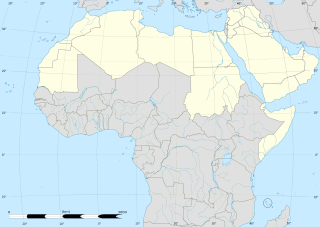 W
WThe Arab world, formally the Arab homeland, also known as the Arab nation, the Arabsphere, or the Arab states, consists of the 22 Arab countries which are members of the Arab League. A majority of these countries are located in Western Asia, North Africa, and the Horn of Africa; the southernmost member, the Comoros, is an island country off the coast of East Africa. The region stretches from the Atlantic Ocean in the west to the Arabian Sea in the east, and from the Mediterranean Sea in the north to the Indian Ocean in the southeast. The eastern part of the Arab world is known as the Mashriq, and the western part as the Maghreb. Arabic is used as the lingua franca throughout the Arab world.
 W
WThe Assyrian homeland or Assyria refers to areas inhabited by Assyrians. The areas that form the Assyrian homeland are parts of present-day Iraq, Turkey, Iran and more recently Syria as well. Moreover, the area that had the greatest concentration of Assyrians in the world until recently is located in the Assyrian Triangle.
 W
WThe Azawagh is a dry basin covering what is today the northwestern Niger, as well as parts of northeastern Mali and southern Algeria. The Azawagh is mainly made up of Sahelian and Saharan flatlands and has a population that is predominantly Tuareg, with some Arabic-speaking, Bouzou and Wodaabe minorities and a recent influx of Hausa and Zarma.
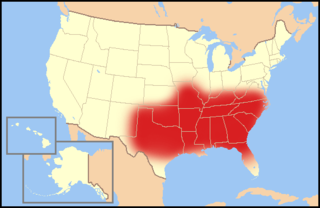 W
WThe Bible Belt is a region of the Southern United States in which socially conservative evangelical Protestantism plays a strong role in society and politics, and church attendance across the denominations is generally higher than the nation's average. The region contrasts with the religiously diverse Midwest and Great Lakes, and the Mormon Corridor in Utah and southern Idaho.
 W
WThe Bible Belt is a strip of land in the Netherlands with the highest concentration of conservative orthodox Calvinist Protestants in the country. It was named after the Bible Belt of the United States.
 W
WThe Norwegian Bible Belt is a loosely defined southwestern coastal area of Norway, which is more religious than most of Norway. Typically, the definition covers Western Norway (Vestlandet) and Southern Norway (Sørlandet), which includes the counties of Rogaland, Hordaland, Sogn og Fjordane, Møre og Romsdal, Vest-Agder and Aust-Agder. However, the most urban areas, such as Stavanger, have become strongly secularised since the 1960s and are no longer considered part of the Bible Belt.
 W
WThe Swedish Bible Belt is a region centered on Jönköping in northern Småland where demographics show that people are characteristically more religious. (Christian) In the Bible Belt the free churches are relatively popular in comparison to the Church of Sweden.
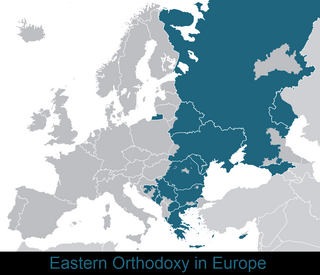 W
WThe term Byzantine commonwealth was coined by 20th-century historians to refer to the area where Byzantine general influence was spread during the Middle Ages by the Byzantine Empire and its missionaries. This area covers approximately the modern-day countries of Greece, Cyprus, North Macedonia, Bulgaria, Serbia, Montenegro, Romania, Moldova, Ukraine, Belarus, southwestern Russia, and Georgia.
 W
WCatalan Countries refers to those territories where the Catalan language, or a variant of it, is spoken. They include the Spanish regions of Catalonia, Valencia, the Balearic Islands and parts of Aragon and Murcia, as well as the department of Pyrénées-Orientales in France, the Principality of Andorra, and the city of Alghero in Sardinia (Italy). In the context of Catalan nationalism, the term is sometimes used in a more restricted way to refer to just Catalonia, Valencia and the Balearic Islands. The Catalan Countries do not correspond to any present or past political or administrative unit, though most of the area belonged to the Crown of Aragon in the Middle Ages. Parts of Valencia (Spanish) and Catalonia (Occitan) are not Catalan-speaking.
 W
WThe modern Celts are a related group of ethnicities who share similar Celtic languages, cultures and artistic histories, and who live in or descend from one of the regions on the western extremities of Europe populated by the Celts.
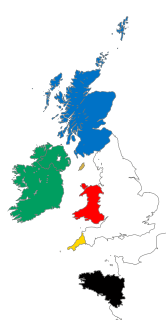 W
WThe Celtic nations is a cultural region and collection of geographical territories in Western Europe and the North Atlantic where Celtic languages and/or cultural traits have survived. The term "nation" is used in its original sense to mean a people who share a common identity and culture and are identified with a traditional territory.
 W
WOverseas Chinese are people of ethnic Chinese birth who reside outside the territories of the People's Republic of China (PRC), its special administrative regions (SARs) of Hong Kong and Macau, as well as the Republic of China.
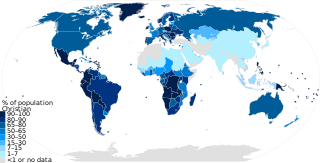 W
WChristendom historically refers to the "Christian world": Christian states, Christian-majority countries and the countries in which Christianity dominates or prevails.
 W
WDinétah is the traditional homeland of the Navajo tribe of Native Americans. In the Navajo language, the word "Dinétah" means "among the people" or "among the Navajo". In the geographical sense, Dinétah encompasses a large area of northwestern New Mexico, southwestern Colorado, southeastern Utah, and northeastern Arizona. The boundaries are inexact, and are generally marked by mountain peaks which correspond to the four cardinal directions.
 W
WThe East Asian cultural sphere, Chinese cultural sphere or Sinosphere encompasses the countries within East and Southeast Asia that were historically influenced by Chinese culture. The region is not to be confused with Greater China, a region that encompasses countries with majority Han Chinese or Chinese-speaking populations.
 W
WIn sociology, the East–West dichotomy is the perceived difference between the Eastern and Western worlds. Cultural rather than geographical in division, the boundaries of East and West are not fixed, but vary according to the criteria adopted by individuals using the term. Historically, Asia was regarded as the East, and Europe was regarded as the West. Today, the "West" usually refers to Australasia, Europe, and the Americas. Used in discussing such studies as management, economics, international relations, and linguistics, the concept is criticized for overlooking regional hybridity.
 W
WEsanland, or the Edo Central Senatorial District is a cultural region and senatorial district located in south-south Nigeria. It is composed of five Local Government Areas in Edo State. Esanland lies west of the banks of the Niger River. It is bordered by Kogi State, Delta State, Edo South Senatorial District, and Edo North Senatorial District. Esanland covers about 2,800 square kilometers and is home to over half a million people. The Esan people and culture of Esanland are generally homogenous.
 W
WThe General Council of the Pyrénées-Orientales is the assembly elected for 6 years by the 31 Cantons of the Pyrénées-Orientales and its executive. Christian Bourquin,(PS) is the elected president since 1998.
 W
WGermanic-speaking Europe refers to the area of Europe that today uses a Germanic language. Over 200 million Europeans speak a Germanic language natively. At the same time 515 million speak a Germanic language natively in the whole world (6.87%).
 W
WGreater India, or Indian cultural sphere is an area composed of many countries and regions in South and Southeast Asia that were historically influenced by Indian culture. The term Greater India as a reference to the Indian cultural sphere was popularised by a network of Bengali scholars in the 1920s. It is an umbrella term encompassing the Indian subcontinent, and surrounding countries which are culturally linked or have received significant Sanskritisation and Indian influence in matters such as written language and religion. These countries have been transformed to varying degrees by the acceptance and induction of cultural and institutional elements that originated in India and spread elsewhere via trade routes. Since around 500 BCE, Asia's expanding land and maritime trade had resulted in prolonged socio-economic and cultural stimulation and diffusion of Hindu and Buddhist beliefs into the region's cosmology, in particular in Southeast Asia and Sri Lanka. In Central Asia, transmission of ideas were predominantly of a religious nature. The Spread of Islam significantly altered the course of the history of greater India.
 W
WGreater Iran or Greater Persia refers to the regions of West Asia, Central Asia, South Asia and Transcaucasia where Iranian culture has had significant influence. Historically, these were regions long ruled by dynasties of various Iranian empires, that incorporated considerable aspects of Persian culture through extensive contact with them, or where sufficient Iranian peoples settled to still maintain communities who patronize their respective cultures. It roughly corresponds to the Iranian plateau and its bordering plains. The Encyclopædia Iranica uses the term Iranian Cultural Continent for this region.
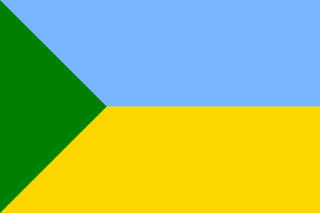 W
WGreen Ukraine, also known as Zeleny Klyn, or as Transcathay, is a historical Ukrainian name for the land in the Russian Far East area between the Amur River and the Pacific Ocean, an area roughly corresponding to the Chinese concept of Outer Manchuria.
 W
WIbero-America or Iberian America is a region in the Americas comprising countries or territories where Spanish or Portuguese are predominant languages. Portugal and Spain are themselves included in some definitions, such as that of the Ibero-American Summit and the Organization of Ibero-American States. The Organization of Ibero-American States also includes Spanish-speaking Equatorial Guinea, in Central Africa, but not the Portuguese-speaking African countries.
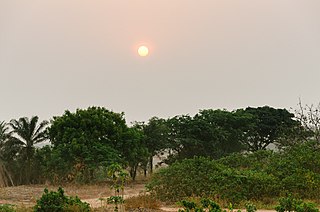 W
WIgboland (Standard Igbo: Àlà Ị̀gbò, also known as Southeastern Nigeria, is the homeland of the Igbo people. It is a cultural and common linguistic region in southern Nigeria. Geographically, it is divided by the lower Niger River into two sections: an eastern and a western one. Its population is characterised by the diverse Igbo culture and the speakers of equally diverse Igbo languages.
 W
WJabal al-Druze, officially Jabal al-Arab, is an elevated volcanic region in the As-Suwayda Governorate of southern Syria. Most of the inhabitants of this region are Druze, and there are also small Muslim and Christian communities. Safaitic inscriptions were first found in this area. The State of Jabal Druze was an autonomous area in the French Mandate for Syria and the Lebanon from 1921 to 1936. In the past, the name Jabal al-Druze was used for a different area, located in Mount Lebanon.
 W
WKamrup is the modern region situated between two rivers, the Manas and the Barnady in Western Assam, with the same territorial extent as the Colonial and post-Colonial "Undivided Kamrup district". It was the capital region of two of the three dynasties of Kamarupa and Guwahati, the current political center of Assam, is situated here. It is characterized by its cultural artifacts.
 W
WKurdistan or Greater Kurdistan is a roughly defined geo-cultural territory in Western Asia wherein the Kurdish people form a prominent majority population and the Kurdish culture, languages, and national identity have historically been based. Geographically, Kurdistan roughly encompasses the northwestern Zagros and the eastern Taurus mountain ranges.
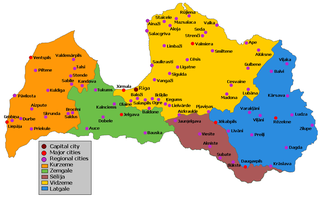 W
WCultural regions of Latvia are several areas within Latvia formally recognised as distinct from the rest of the country. While some of these regions are seen purely as culturally distinct, others have historically been parts of different countries and have been used to divide the country for administrative and other purposes. The Constitution of Latvia recognises four distinct regions: Kurzeme, Zemgale, Latgale and Vidzeme.
 W
WLazistan is a historical and cultural region of the Caucasus and Anatolia, traditionally inhabited by the Laz people, located mostly in Turkey, with small parts in Georgia. Its area is about 7,000 km2, and its population about 500,000. Geographically, Lazistan consists of a series of narrow, rugged valleys extending northward from the crest of the Pontic Alps, which separate it from the Çoruh valley, and stretches east-west along the southern shore of the Black Sea. Lazistan is a virtually a forbidden term in Turkey. The designation of the term of Lazistan was officially banned in 1926, by Kemalists, as the name was considered to be an 'unpatriotic' invention of ancien regime. However, Recep Tayyip Erdoğan reportedly said in 2013, that the Ottoman Empire used to call the Black Sea Region Lazistan.
 W
WThe following is a list of historical and contemporary Assyrian settlements in the Middle East. This list includes settlements of Assyrians from Southeastern Turkey who left their indigenous tribal districts in Hakkari, Sirnak and Mardin province due to torment, violence and displacement by the Ottomans in the First World War. Many Assyrians from Urmia, Iran were also affected and as such have emigrated and settled in other towns. Resettling again occurred during the Simele massacre in northern Iraq, perpetrated by the Iraqi military coup in the 1930s, with many fleeing to northeastern Syria.
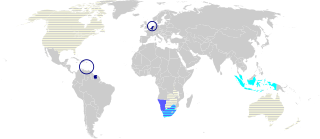 W
WThe following is a list of the territorial entities where Afrikaans or Dutch are official languages. It includes countries, which have Afrikaans and/or Dutch as their nationwide official language(s), as well as dependent territories with Afrikaans and/or Dutch as a co-official language.
 W
WThe following is a list of the territorial entities where German is an official language. It includes countries which have German as their nationwide official language(s), as well as dependent territories with German as a co-official language.
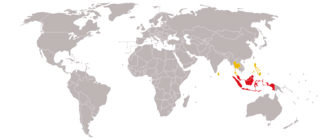 W
WThe Malay world or Malay realm, is a concept or an expression that has been utilised by different authors and groups over time to denote several different notions, derived from varied interpretations of Malayness, either as a racial category, as a linguistic group or as a political-cultural group. The use of the term 'Malay' in much of the conceptualisation is largely based on the prevalent Malay cultural influence, manifested in particular through the spread of Malay language in Southeast Asia as observed by different colonial powers during the Age of Discovery.
 W
WMithila, also known as Tirhut and Tirabhukti, is a geographical and cultural region of the Indian subcontinent bounded by the Mahananda River in the east, the Ganges in the south, the Gandaki River in the west and by the foothills of the Himalayas in the north. It comprises certain parts of Bihar and Jharkhand of India and adjoining districts of the eastern Terai of Nepal.
 W
WMount Lebanon is a mountain range in Lebanon. It averages above 2,500 m (8,200 ft) in elevation.
 W
WThe terms Muslim world and Islamic world commonly refer to the Islamic community (Ummah), consisting of all those who adhere to the religion of Islam, or to societies where Islam is practiced. In a modern geopolitical sense, these terms refer to countries where Islam is widespread, although there are no agreed criteria for inclusion. The term Muslim-majority countries is an alternative often used for the latter sense.
 W
WThe term "New World" is a name used for the majority of Earth's Western Hemisphere, specifically the Americas. The term gained prominence in the early 16th century, during the Age of Discovery, shortly after Italian explorer Amerigo Vespucci concluded that America represented a new continent, and subsequently published his findings in a pamphlet titled Mundus Novus. This realization expanded the geographical horizon of classical European geographers, who had thought the world consisted of Africa, Europe, and Asia, collectively now referred to as the Old World, or Afro-Eurasia. The Americas were also referred to as the fourth part of the world.
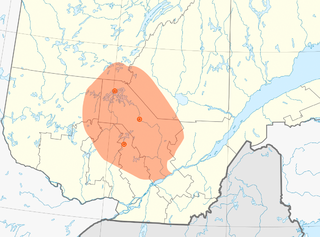 W
WNitaskinan is the ancestral homeland of the Atikamekw people. It is located in the valley of the Saint-Maurice River in Quebec, Canada. It covers an area of 80,000 km2 On 8 September 2014, the Conseil de la Nation Atikamekw declared unilaterally the sovereignty of the Atikamekw Nation on the Nistaskinan. The objective of this is mainly to obtain a right of review for the projects exploiting the natural resources and to highlight the Atikamekw's identity. "Nistaskinan" means "our (excl.) land" in the Atikamekw language, where "Kitaskinan" means "our (inclusive) land," similar to other Cree languages' use of aski. From a legal perspective, according to the Indian Act, the Atikamekw have self-administration on three Indian reserves, Manawan, Obedjiwan and Wemotaci, but the Nitaskinan territory covers an area much wider.
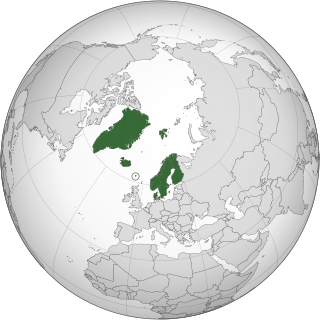 W
WThe Nordic countries, or the Nordics, are a geographical and cultural region in Northern Europe and the North Atlantic, where they are most commonly known as Norden. The region includes the sovereign states of Denmark, Finland, Iceland, Norway and Sweden, as well as the autonomous countries of the Faroe Islands and Greenland, which are both part of the Kingdom of Denmark. The Åland Islands, an autonomous region of the Republic of Finland; Jan Mayen island and the archipelago of Svalbard, both unincorporated areas of Metropolitan Norway, are also included. Bouvet Island, a dependency of the Kingdom of Norway, is sometimes not considered a part of the Nordic countries due to its remote geographical location. Several regions in Europe such as the Northern Isles of Scotland and Estonia share cultural and ethnic ties with the Nordic nations, but are not considered to be part of the Nordic countries today. Scandinavians, who comprise over three quarters of the region's population, are the largest group, followed by Finns, who comprise the majority in Finland; other ethnic groups are the Greenlandic Inuit, the Sámi people, and recent immigrants and their descendants. The native languages Danish, Norwegian, Swedish, Icelandic, and Faroese are all North Germanic languages rooted in Old Norse. Native non-Germanic languages are Finnish, Greenlandic languages and several Sámi languages. The main religion is Lutheran Christianity.
 W
WNorthern England, also known as the North of England or simply the North, is the second most northern area of Great Britain, considered separate due to cultural differences from the other areas – Scotland, Wales, Midlands and South. The area includes the combined authority regions of Manchester, Liverpool, Tees Valley, North East, North of Tyne, Sheffield and Leeds.
 W
WNorthern Mexico, commonly referred as El Norte, is an informal term for the northern cultural and geographical area in Mexico. Depending on the source, it contains some or all of the states of Baja California, Baja California Sur, Chihuahua, Coahuila, Durango, Nuevo León, Sinaloa, Sonora and Tamaulipas.
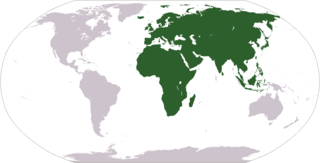 W
WThe term "Old World" is used commonly in the West to refer to Africa, Asia and Europe, regarded collectively as the part of the world known to its population before contact with the "New World".
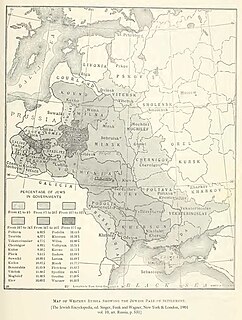 W
WThe Pale of Settlement was a western region of Imperial Russia with varying borders that existed from 1791 to 1917 in which permanent residency by Jews was allowed and beyond which Jewish residency, permanent or temporary, was mostly forbidden. Most Jews were still excluded from residency in a number of cities within the Pale as well. A few Jews were allowed to live outside the area, including those with university education, the ennobled, members of the most affluent of the merchant guilds and particular artisans, some military personnel and some services associated with them, including their families, and sometimes their servants. The archaic English term pale is derived from the Latin word palus, a stake, extended to mean the area enclosed by a fence or boundary.
 W
WPashtūnistān is the geographic historical region inhabited by the indigenous Pashtun people of modern-day Afghanistan and Pakistan in South-Central Asia, wherein Pashtun culture, language, and national identity have been based. Alternative names historically used for the region include "Pashtūnkhwā" (پښتونخوا) and "Afghānistān" (افغانستان), since at least the 3rd century CE onward. Pashtunistan borders Iran to the west, Persian and Turkic-speaking areas of Turkestan region to the north, Kashmir to the northeast, Punjab to the east, and Balochistan to the south.
 W
WA Persianate society is a society that is based on or strongly influenced by the Persian language, culture, literature, art and/or identity.
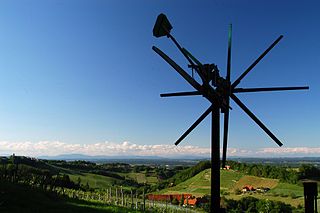 W
WPrlekija is a region in northeastern Slovenia between the Drava and Mura rivers. It comprises the eastern part of the Slovene Hills, stretching from the border with Austria to the border with Croatia. It is part of the traditional province of Lower Styria. Together with the traditional province of Prekmurje, it forms part of the Mura Statistical Region. Its central town is Ljutomer.
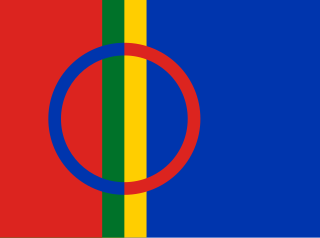 W
WSápmi is the cultural region traditionally inhabited by the Sámi people. Sápmi is in Northern Europe and includes the northern parts of Fennoscandia.
 W
WChinese-speaking world or Sinophone is a neologism that fundamentally means "Chinese-speaking", typically referring to a person who speaks at least one variety of Chinese. Academic writers use Sinophone "Chinese-speaking regions" in two ambiguous meanings: either specifically "Chinese-speaking areas where it is a minority language, excluding China and Taiwan" or generally "Chinese-speaking areas, including where it is an official language". Many authors use the collocation Sinophone world to mean the regions of Chinese diaspora outside of Greater China, and some for the entire Chinese-speaking world. Mandarin Chinese is the second most commonly spoken language today, with 1.12 billion people, approximately 20% of the world population, speaking it.
 W
WSogdia or Sogdiana was an ancient Iranian civilization that at different times included territory located in present-day Uzbekistan, Tajikistan, Kazakhstan, and Kyrgyzstan, such as Samarkand, Bukhara, Khujand, Panjikent, and Shahrisabz. Sogdiana was also a province of the Achaemenid Empire, eighteenth in the list on the Behistun Inscription of Darius the Great. In the Avesta, Sogdiana is listed as the second best land that the supreme deity Ahura Mazda had created. It comes second, after Airyanem Vaejah, "homeland of the Aryans", in the Zoroastrian book of Vendidad, indicating the importance of this region from ancient times. Sogdiana was first conquered by Cyrus the Great, the founder of the Achaemenid Empire. The region would then be annexed by the Macedonian ruler Alexander the Great in 328 BC. The region would continue to change hands under the Seleucid Empire, Greco-Bactrian Kingdom, Kushan Empire, Hephthalite Empire, and Sasanian Empire.
 W
WThe Swahili coast is a coastal area of the Indian Ocean in Southeast Africa inhabited by the Swahili people. it includes Sofala (Mozambique), Mombasa, Gede, Pate Island, Lamu, Malindi, and Kilwa. In addition, several coastal islands are included in the Swahili coast such as Zanzibar and Comoros. Areas of what is today considered the Swahili coast were historically known as Azania or Zingion in the Greco-Roman era, and as Zanj or Zinj in Middle Eastern, Chinese and Indian literature from the 7th to the 14th century. The word "Swahili" means people of the coast in Arabic and is derived from the word "sahil" (coast). The Swahili people and their culture formed from a distinct mix of African and Arab origins. The Swahilis were traders and merchants and readily absorbed influences from other cultures. Historical documents including the Periplus of the Erythraean Sea and works by Ibn Battuta describe the society, culture, and economy of the Swahili coast at various points in its history. The Swahili coast has a distinct culture, demography, religion and geography, and as a result - along with other factors, including economic - has witnessed rising secessionism.
 W
WTibet is a region in East Asia covering much of the Tibetan Plateau spanning about 2.5 million km2. It is the traditional homeland of the Tibetan people as well as some other ethnic groups such as Monpa, Tamang, Qiang, Sherpa, and Lhoba peoples and is now also inhabited by considerable numbers of Han Chinese and Hui people. Tibet is the highest region on Earth, with an average elevation of 5,000 m (16,000 ft). Located in the Himalayas, the highest elevation in Tibet is Mount Everest, Earth's highest mountain, rising 8,848 m (29,029 ft) above sea level.
 W
WTurkmeneli, also known as Turkmenland, and historically as Turcomania, is a political term used to define the vast swath of territory in which the Iraqi Turkmens historically have had a dominant population. The term incorporates the Iraqi Turkmen/Turkoman homelands running from Iraq's border with Turkey and Syria and diagonally down the country to the border with Iran.
 W
WUkrainophilia is the love of or identification with Ukraine and Ukrainians; its opposite is Ukrainophobia. The term is used primarily in a political and cultural context. "Ukrainophilia" and "Ukrainophile" are the terms used to denote pro-Ukrainian sentiments, usually in politics and literature. Ukrainophilia was severely persecuted by the imperial Russian government. Ukrainian-language books and theater were banned.
 W
WThe Western world, also known as the West, refers to various regions, nations and states, depending on the context, most often consisting of the majority of Europe, Australasia, and the Americas. The Western world is also known as the Occident, in contrast to the Orient, or Eastern world. It might mean the Northern half of the North–South divide. Western culture is commonly said to include: Australia, Canada, all European member countries of the EFTA and EU, the European microstates, New Zealand, the United Kingdom, and the United States.
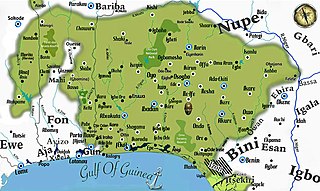 W
WYorubaland is the cultural region of the Yoruba people in West Africa. It spans the modern day countries of Nigeria, Togo and Benin, and covers a total land area of 142,114 km2 or about the same size as the combined land areas of Greece and Montenegro, of which 106,016 km2 (74.6%) lies within Nigeria, 18.9% in Benin, and the remaining 6.5% is in Togo. The geocultural space contains an estimated 55 million people, the overwhelming majority of this population being ethnic Yorubas.
 W
WYugoslavia was a country in Southeast Europe and Central Europe for most of the 20th century. It came into existence after World War I in 1918 under the name of the Kingdom of Serbs, Croats and Slovenes by the merger of the provisional State of Slovenes, Croats and Serbs with the Kingdom of Serbia, and constituted the first union of the South Slavic people as a sovereign state, following centuries in which the region had been part of the Ottoman Empire and Austria-Hungary. Peter I of Serbia was its first sovereign. The kingdom gained international recognition on 13 July 1922 at the Conference of Ambassadors in Paris. The official name of the state was changed to Kingdom of Yugoslavia on 3 October 1929.